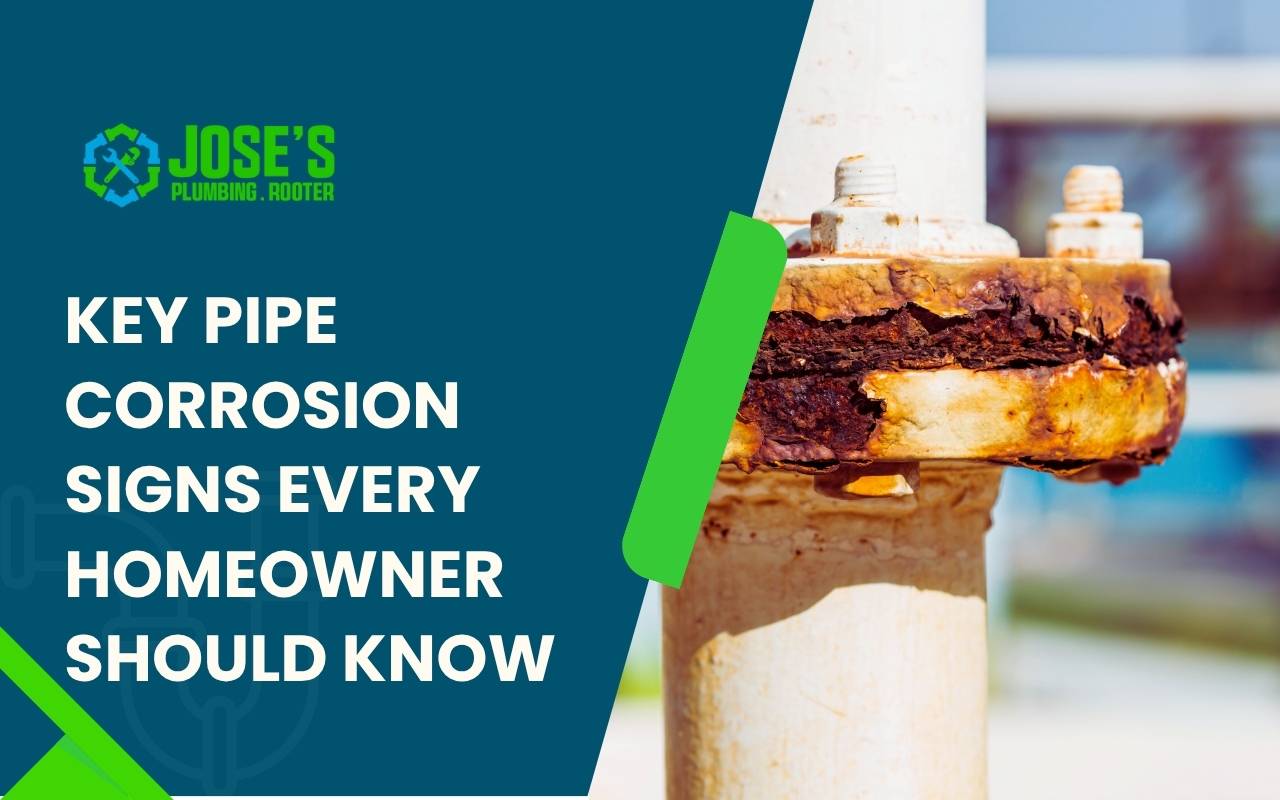
Key Pipe Corrosion Signs Every Homeowner Should Know
The integrity of your home's plumbing might not be on your daily checklist, but ignoring it could lead to costly repairs. Pipe corrosion is a silent intruder, gradually compromising the safety of your water supply. Many homeowners remain unaware of the early indicators until major damage occurs. Whether you live in an older property or a new build, recognizing pipe corrosion signs can save you from headaches and expenses. When your water starts to look discolored or taste odd, it’s often a warning. These subtle changes are not only aesthetic issues but signals of corrosion. Additionally, frequent leaks or drops in pressure may indicate the need for quick action. By learning to identify these key pipe corrosion signs, you protect your home and ensure your family’s comfort.
Understanding Pipe Corrosion in Home Plumbing Systems
Pipe corrosion is the gradual degradation of metal pipes due to chemical or electrochemical reactions. In home plumbing, this process weakens water lines, leading to leaks and failures. Types of corrosion include uniform, pitting, and galvanic corrosion. Galvanic corrosion happens when two different metals contact water, causing one to corrode faster. Understanding these mechanisms is crucial for spotting early pipe corrosion signs before they turn costly.
Water chemistry heavily influences how quickly corrosion develops. High acidity, oxygen levels, and dissolved solids accelerate breakdown. Cast iron and galvanized steel pipes are most vulnerable. Even copper pipes can corrode when exposed to aggressive water with chlorides or ammonia. PVC and polyethylene avoid corrosion but may not suit high-temperature systems. Moreover, soil composition and stray electrical currents also affect corrosion rates. Homes built on acidic soils often see buried pipes degrade faster. By knowing these factors, homeowners can appreciate why monitoring for pipe corrosion signs is vital.
Importance of Recognizing Early Signs
Detecting pipe corrosion signs early saves homeowners from large repair bills and water damage. Minor leaks or rust stains might seem small, yet they often signal deeper corrosion. If left unchecked, corrosion impacts performance and even health by leaching metal into drinking water. Prompt action stops progression, preserves water quality, and extends pipe lifespan.
Early detection reduces disruptions and prevents severe failures like burst pipes or mold growth. Maintaining plumbing health ensures stable water pressure and safe systems. Noticing early pipe corrosion signs allows homeowners to schedule inspections and keep plumbing reliable. Observing water color, taste, and pressure changes helps catch problems early and protect long-term plumbing efficiency.
Discolored Water: A Common Indicator of Corrosion
One of the most visible pipe corrosion signs is discolored water. When water shifts from clear to yellow or reddish tones, corrosion is likely. Rust particles inside pipes cause these changes. While mild discoloration might not harm health, it reveals internal deterioration.
Yellow or brown water after long inactivity often indicates sediment from corrosion.
Persistent discoloration means corrosion is advanced and needs inspection.
Stains on fixtures or laundry may also reveal ongoing corrosion issues.
If discolored water continues, testing your plumbing helps confirm corrosion. Consider repiping services when problems persist. Professional evaluations ensure your water stays safe and clear while addressing hidden corrosion effectively.
Unusual Taste in Water: What It Could Mean
A metallic or sour taste is another sign of corrosion. As pipes degrade, metals like iron or copper mix with your water. This creates unpleasant flavors and may harm health over time. Though occasional taste changes can occur, consistent metallic taste demands attention.
Iron adds a strong metallic flavor.
Copper or manganese can taste bitter or sharp.
Persistent changes indicate ongoing corrosion within pipes.
Homeowners experiencing strange tastes should test their water. If results confirm corrosion, solutions include filtration or replacement. Installing new systems through copper or PEX repiping Sunnyvale CA ensures long-term safety and better-tasting water.
Frequent Leaks: Warning Signs to Watch Out For
Leaking pipes are one of the strongest pipe corrosion signs. Small drips or damp spots show that corrosion has thinned pipe walls. Ignoring them risks structural damage and mold growth.
Check under sinks and around water heaters regularly.
Track recurring leaks—they often signal widespread corrosion.
Quick fixes might help briefly but won’t stop internal decay.
If leaks repeat, contact experts through the contact page to schedule professional inspection. Identifying problems early helps prevent expensive repairs and protects your plumbing system.
Drops in Water Pressure: Implications for Pipe Health
When corrosion narrows pipe interiors, water flow slows, causing pressure drops. This subtle pipe corrosion sign often goes unnoticed until daily use becomes frustrating. Consistent low pressure throughout the home points to major corrosion inside supply lines.
Testing multiple faucets helps isolate the issue. If only one area has low pressure, rust buildup might be local. If pressure loss is widespread, pipe replacement may be necessary. Acting early helps restore efficient flow and avoid sudden service interruptions.
Addressing Pipe Corrosion: Prevention and Maintenance Tips
Preventing corrosion starts with water treatment and maintenance. Using softeners and pH filters reduces mineral buildup and slows corrosion. Regular flushing removes sediment before it damages pipe walls. For older systems, replacing corroded sections with PEX or copper helps increase durability.
Flush pipes every few months to remove debris.
Install water treatment systems for balance and protection.
Schedule plumbing inspections every two years for early detection.
Coatings, cathodic protection, and improved ventilation also extend pipe life. Routine checks reveal early pipe corrosion signs and allow for timely repair. For advanced solutions, explore residential plumbing repair installations Palo Alto CA for expert service and reliable maintenance options.
FAQs About Pipe Corrosion Signs
How can I tell if my pipes are corroding?
Look for discoloration, leaks, or strange water tastes. These pipe corrosion signs appear early and indicate potential damage.
Does pipe material affect corrosion rate?
Yes. Steel and iron corrode faster than copper or PEX. Choosing the right material reduces corrosion risk significantly.
Can discolored water harm my health?
Occasional discoloration might not be harmful, but persistent rust indicates contamination. Testing water ensures safety and clarity.
Is it possible to repair corroded pipes myself?
Minor surface rust can be cleaned, but deep corrosion needs professional attention. DIY fixes may delay, not solve, the issue.
When should I call a plumber?
If leaks, pressure drops, or strange tastes persist, contact professionals immediately. Early help prevents severe corrosion damage.
Safeguarding Your Home Against Pipe Corrosion
Pipe corrosion signs start small but grow quickly. Watching for discoloration, taste changes, and leaks helps prevent serious damage. Regular inspections and professional maintenance keep your plumbing in top shape. For reliable solutions, don’t hesitate to reach out through the contact page. Acting early ensures safety, efficiency, and long-lasting plumbing for your home.
Contact Us
Santa Clara, CA
24/7 Availability
We Accept Cash, Checks, Zelle, and Credit Cards




